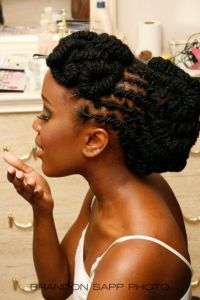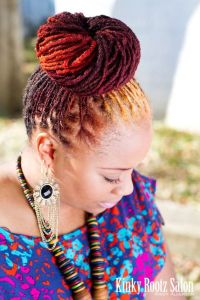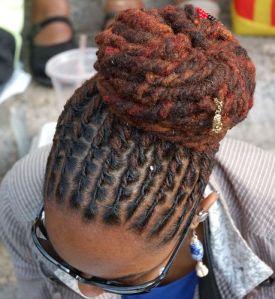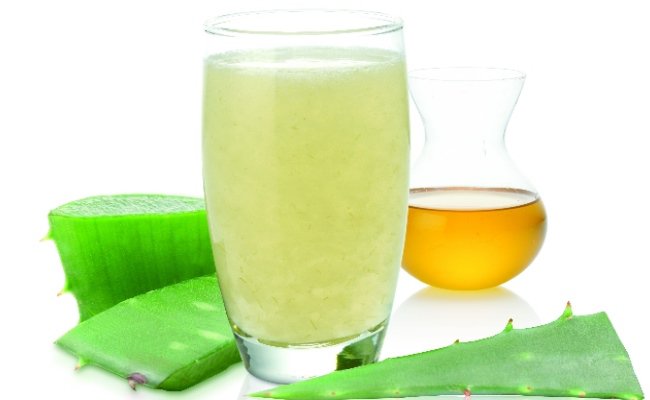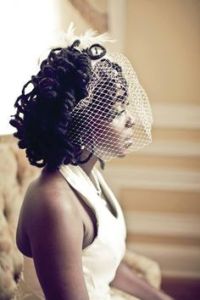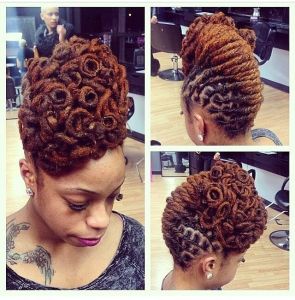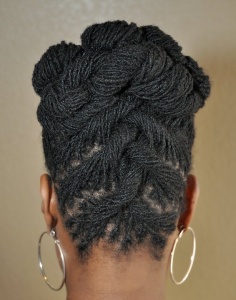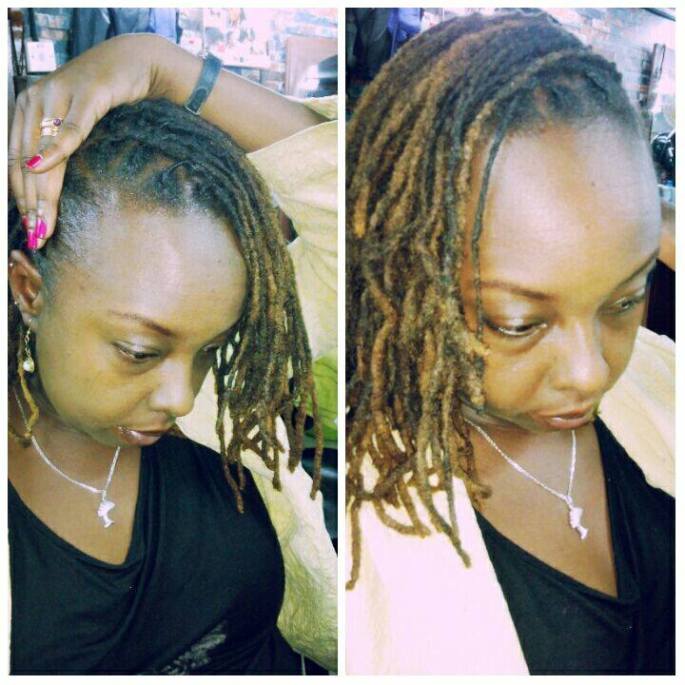Straw-Set testimonials.
Over the past 7 years, my locs would go through many hairstyles as I was trying to be as dynamic or flexible with my crown as possible! In between visits from retouches and after my two-weeks wash routine, I noticed that my hairline was thinning and even lost three valuable locs to my dismay. The need to have a neat hairline was a cause of constant stress. I resolved to give my hairline a rest and sought advice for my loctician.
My stylist advised me to resist from manipulating my hairline and cover my hair with a silk bonnet or scarf when sleeping. The dangers of constant manipulation or tightening of dreadlocs during styling ultimately leads to hair loss or the medical condition known as Traction alopecia. Traction alopecia is serious condition caused by traction (or pulling) that leads to hair loss . This condition is preventable and avoidable by being gentle with the hairline. The rule of thumb is to ensure comfort or ease after a retouch and styling. Speaking up when, one feels that their hair has been held up too tightly ,avoids unnecessary discomfort. If you see little bumps that eventually turn into white-head like pimples on your hairline, it time to let your hair breathe by removing the hairstyle.
Dreadlocks offers one versatility and other creative and unique ways to style your hair . I soon discovered the joys of scarfs, little bands in addition to the other styles available. My guy’ BenMohfaya” recently introduced me straw sets. After a retouch, the hair is put on a little straw sets,foam wrap applied and 40 minutes later after sitting in a dryer lovely curls appear.
This hairstyle allows my hair to breathe and can last between two-weeks to a month. I moisturize the curls daily with some water and oil. I prefer the coconut or olive which I find light on my scalp. Be careful to use as minimal water as possible to avoid detangling the curls. Fingers ca be used to manipulate the curl patterns .At bedtime, I tie my locs with a huge band and then cover the with a silk scarf.
In conclusion,remember to avoid over styling or manipulation of your locs. Avoid tight mohawks or pins ups. Let your hair rest after retouches and reduce on retouches once your hair locs. Moisturize, moisturize and use light oils that are easily available in the supermarkets and beauty outlets. Have a professional loctician advice on how to care for your locs as well as check the progress of your hair over time. Maintaining a healthy balanced diet, proper rest and have a chill attitude help a lot in giving you great locs.
#dreadlocs #mohfaya
#strawsetdreadlocs
Kassy
Loyal customer to Mohfaya Dreadlocks Salon.
Our physical address is: Mondlane street ..former tuskys bebabeba 1St floor room F33
We are open from Monday-Saturday 8.00 am -8.00 pm. Feel free to reach out to us at 0720012397
Come and let us pamper you.







